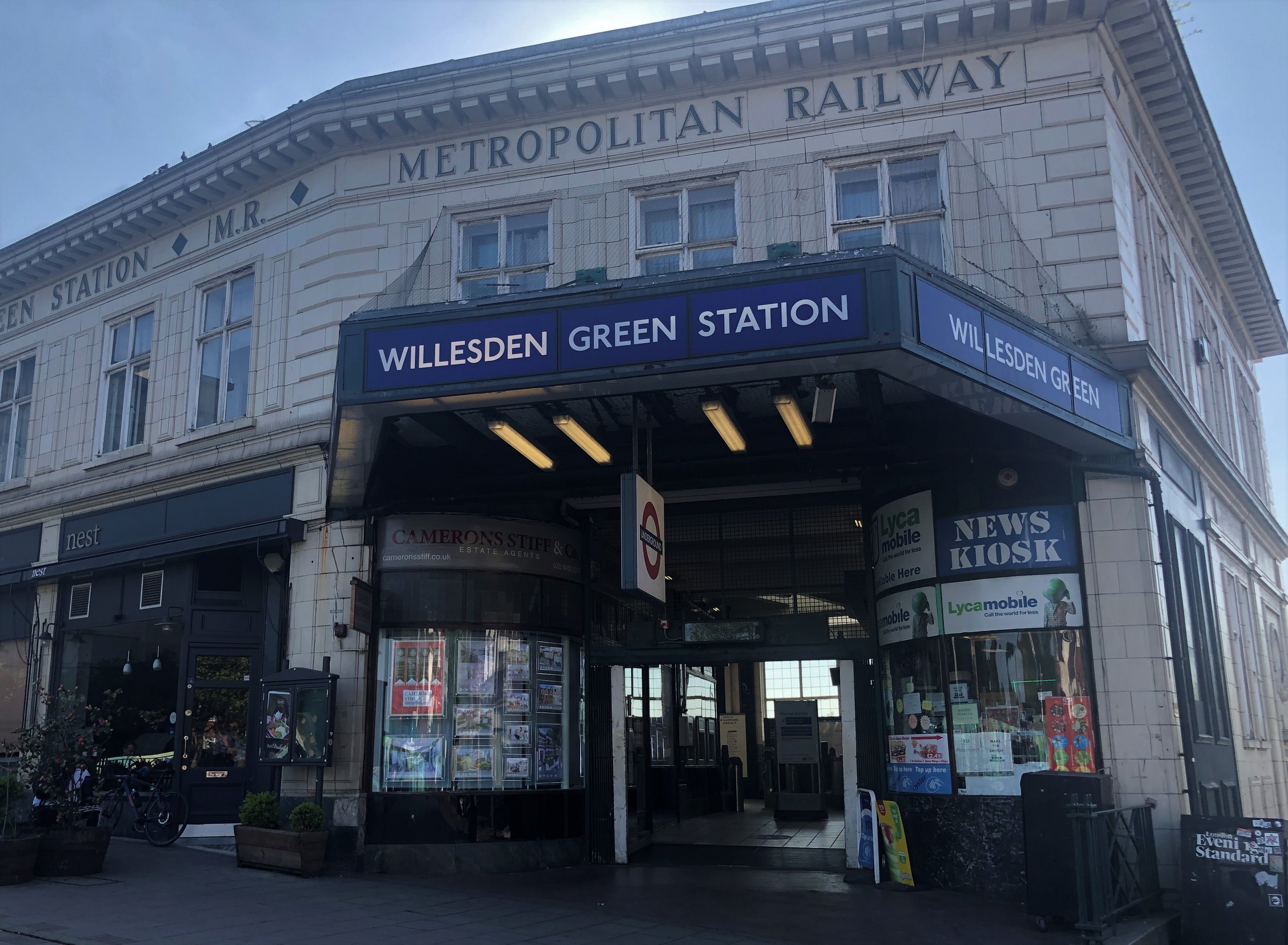Willesden Green Station
Street congestion was a big problem in 19th century London. The world’s first underground railway was built to mitigate this and opened in London in 1863. Called The Metropolitan Railway, it was designed to link three of London’s main line railway termini (Paddington, Euston, and King’s Cross) with the City.
Willesden Green underground station opened in 1879, initially operating as a temporary terminus on a Metropolitan extension line; this line quickly continued beyond the Willesden Green station. In 1880 the station was given a second platform with the addition of a second track. As it mostly serviced freight trains, 1880 also saw the development of a yard for goods such as coal, building materials, and produce. The station was known as Willesden Green and Cricklewood between 1894 and 1938, before reverting back to its original name, Willesden Green.
Willesden Green Underground Station, 2022
Willesden Green station is one of the last examples of the Neoclassical underground style before modernist styles and designs by architect Charles Holden became more prominent in the 1920s and 30s.
From 1939 it also served the Stanmore branch of the Bakerloo line, with Metropolitan line services being withdrawn the following year. It was incorporated into the Jubilee line, when it opened in 1979. Willesden Green station is among the oldest stations on this line.
The Station has retained some of the original Neo-classical design features
Willesden Green Underground Station, 2022
The arrival of the railway enabled a relatively fast commute into the city and transformed Willesden Green from a rural town into one of the fastest-growing districts of London.
Since its opening in 1879, the station had grown to serve more trains and faster trains. To accommodate the increasing commuter traffic, the entire station was rebuilt in 1925 by architect Charles Walter Clark. Central London stations were built in a Neoclassical style, which took inspiration from the architecture of Ancient Greece and Rome and featured simple geometry and elegant designs devoid of excessive ornament. Clark designed 25 Metropolitan line stations between 1911-1933, five of which are listed buildings today; Willesden Green underground station holds a Grade II listing.
Clark replaced the original brick façade with the cream terracotta he used at both Great Portland Street (1912) and Farringdon (1925) stations, also Grade II listed buildings. The diamond shaped clock reflects the solid diamond motifs used in the station’s main signage, part of the Metropolitan Railway company’s motif and an example of its effort to present a strong corporate image during the interwar period. The green tiles of the ticket hall have become synonymous with the Metropolitan line and the early London Underground stations.
Willesden Green Underground Station from Lyford Road Bridge, Courtesy - Nigel Cox 2010
Today, Willesden Green underground station – at street level - still retains its original lettering and shopfronts, deep green marble plinths are preserved in the shops, below a black vitrolite (glass) band. Inside the booking hall we can see the original sea green glazed ceramic tiles, with a frieze of sun yellow and mauve, as well as the original ticket windows.
With its original architectural features and aglow with Victorian and Edwardian charm with a dash of the Arts and Crafts movement, Willesden Green Station is a must see for anyone looking to feel a tangible link to Willesden’s history and past.





